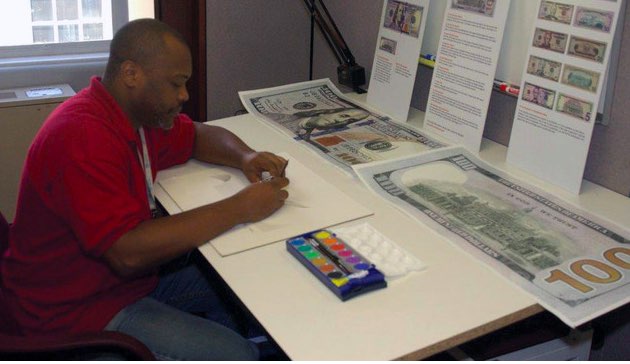
By Allen Baker
Benjamin Franklin was a prolific inventor and a brilliant thinker. But even he would be amazed at the vast profits that arise simply from printing his portrait on the U.S. hundred-dollar bill.
Here’s how it works: Each year, the U.S. Bureau of Engraving and Printing rolls out roughly a billion crisp new hundreds bearing Franklin’s image. (Think of a goose laying golden eggs.) It then sells those bills to banks. The U.S. pockets, well, $100 billion –- minus 14.2 cents apiece to make the bills.
It’s an economic miracle!
Then comes a second economic miracle. Somewhere close to $80 billion worth of these freshly minted Benjamins (street slang for hundreds) immediately gets spirited across the U.S. border.
That $80 billion number makes paper cash one of the top five U.S. exports, something badly needed in an economy that gets hollowed out more each day. By comparison, exports of commercial aircraft and aircraft engines (think Boeing) hit $99 billion in 2018 — and the profits on those planes are a lot lower than on the Benjamins.
Overall, a total of $1.75 trillion in Federal Reserve notes were in circulation as of Jan. 8, according to the Federal Reserve. Somewhere around, and probably above, $1.4 trillion of that is in hundreds. (There were $1.34 trillion worth of hundred dollar bills at the end of 2018, the most recent number I could find.)
The vast bulk of those hundreds are overseas. Nobody knows for sure just how much, but 80 percent seems like a good guess.
What we do know is this: in nearly every clandestine transaction around the world, and in many legitimate ones, Benjamins are changing hands.
U.S. Benjamins are accepted everywhere. They are small and portable. A million dollars in Benjamins only weighs about ten pounds. The U.S. makes sure those bills have sophisticated anti-counterfeiting measures, thus assuring the drug dealers – and legitimate small businesses still transacting in cash — that they are getting the real thing.
Two economists, Richard D. Porter and Ruth A. Judson, explained the allure very succinctly way back in the October 1996 Federal Reserve Bulletin:
“Today, foreigners hold U.S. currency for the same reasons that people once held gold coins: as a unit of account, a medium of exchange, and a store of value when the purchasing power of the domestic currency is uncertain or when other assets lack sufficient anonymity, portability, divisibility, liquidity, or security,” they wrote. Note the anonymity part. “A safe asset in an unpredictable world, dollars often flow into a country during periods of economic and political upheaval and sometimes remain there well after the crisis has subsided.”
So you can understand how sending threats, helicopter gunships and troops around the world actually serves as a great marketing tool for Benjamins. Every time the U.S. destroys some poor nation’s economy, more Benjamins are needed…
For the rest of this article contributed by ALLEN BAKER for publication in ThisCantBeHappening!, the uncompromised, collectively run, six-time Project Censored Award-winning online alternative news site, please go to: https://thiscantbehappening.net/papering-the-world-with-benjamins/

